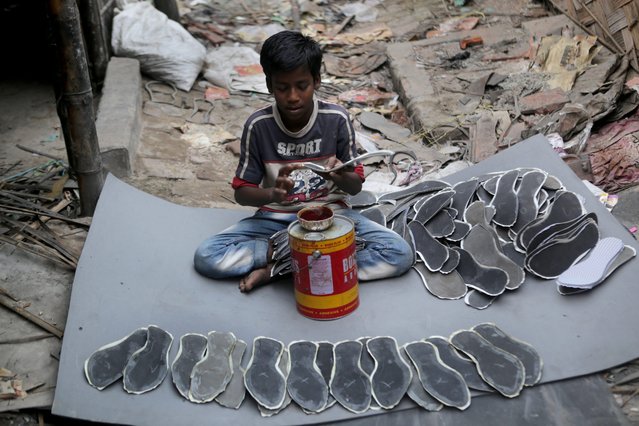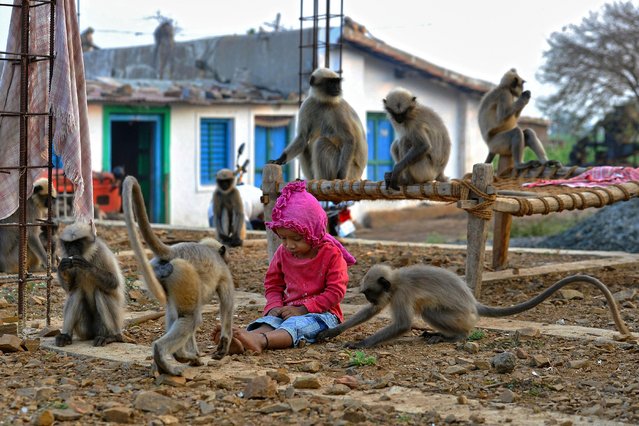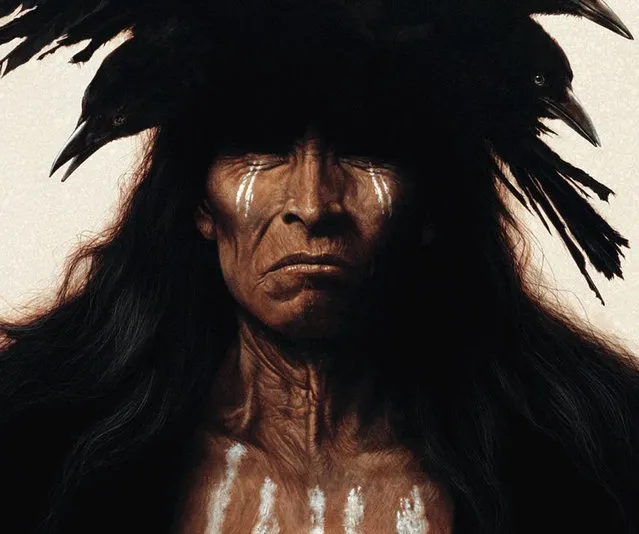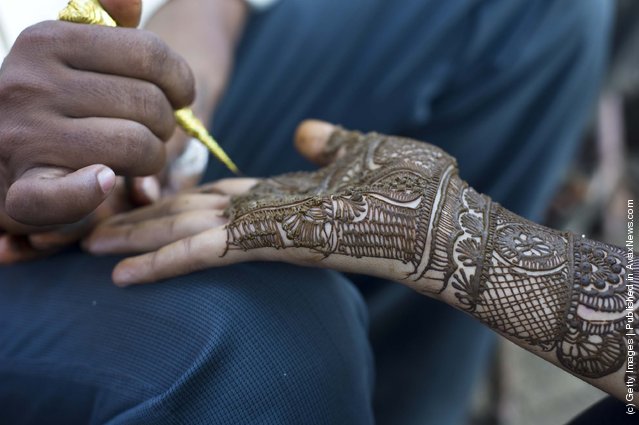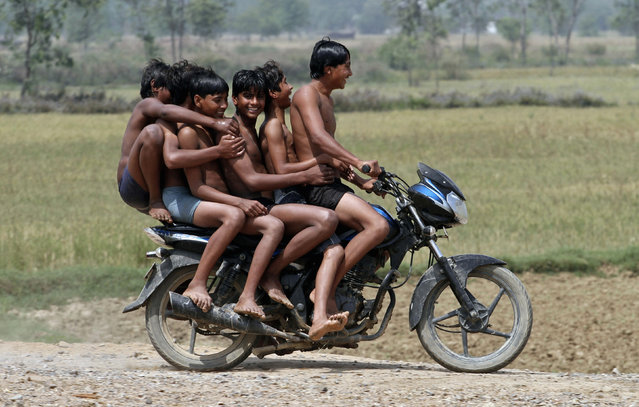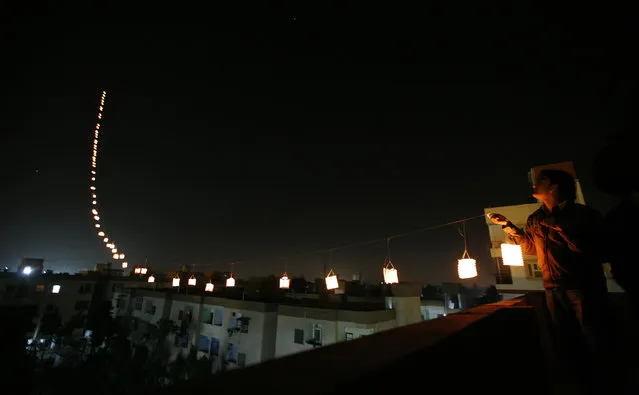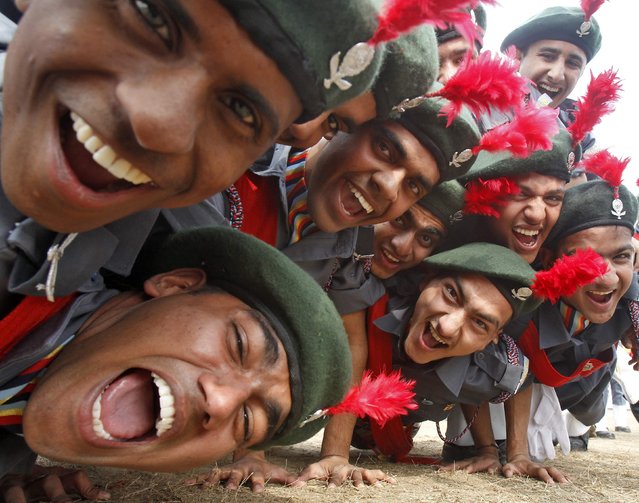
Cadets from the National Cadet Corps (NCC) celebrate after being awarded the first position in the best marching trophy competition during the Republic Day celebrations in the northern Indian city of Chandigarh January 26, 2015. (Photo by Ajay Verma/Reuters)
27 Jan 2015 12:23:00,post received
0 comments

